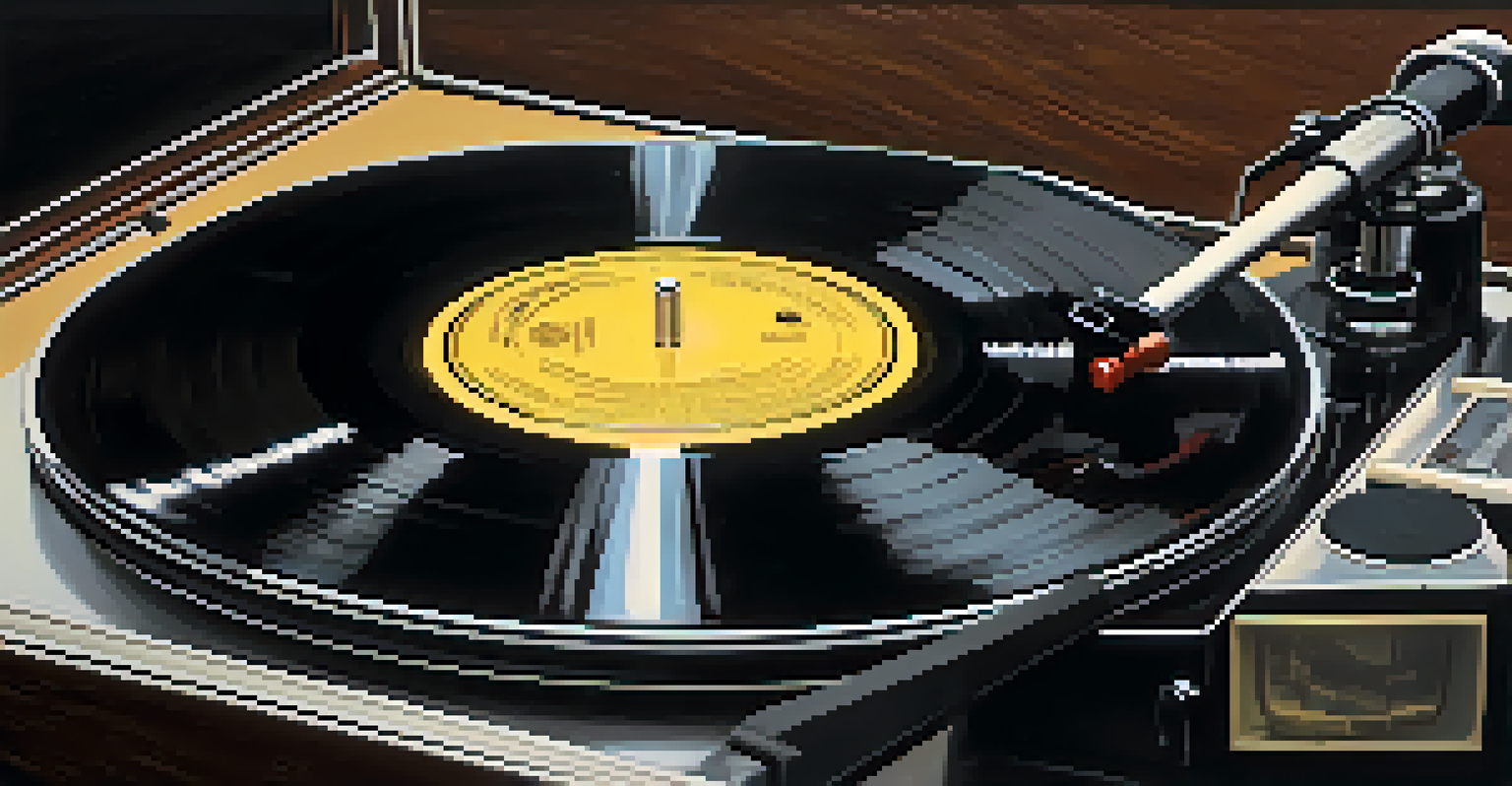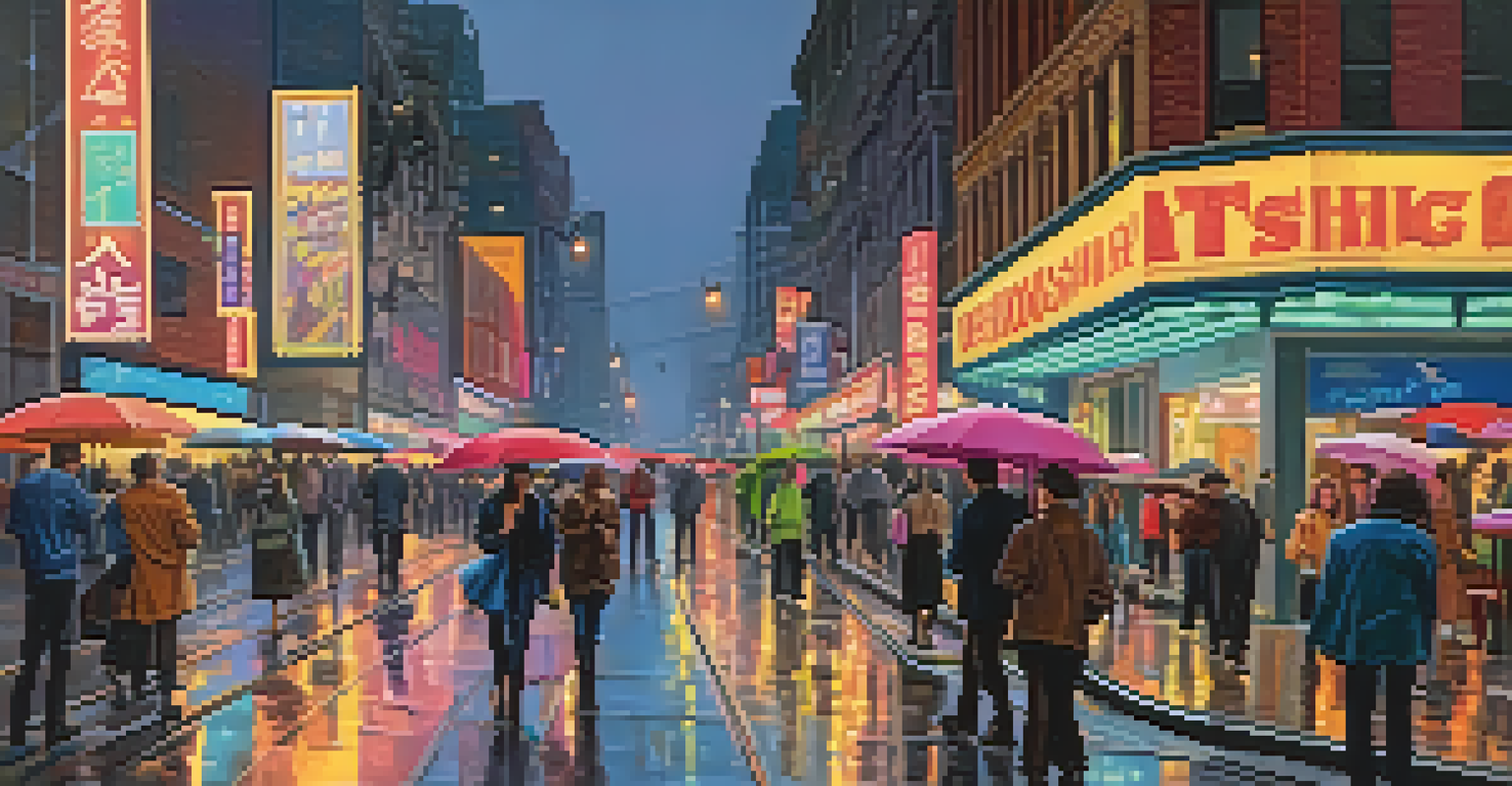The Power of Music in Sound Design for Media Projects

Understanding the Role of Music in Sound Design
Music plays a crucial role in sound design, serving as an emotional backbone for media projects. It enhances the storytelling experience, guiding the audience's feelings and reactions. For instance, a suspenseful score can heighten tension in a thriller, while a light-hearted melody can evoke joy in a comedy.
Music can change the world because it can change people.
In sound design, music is not just an accessory; it’s an integral part of the narrative. It works in tandem with sound effects and dialogue to create a cohesive audio experience. Think of it as the spice in a dish—while the main ingredients are important, it’s the music that adds flavor and depth.
Moreover, music can help establish a setting or time period, transporting audiences to different worlds. Whether it’s the jangly guitars of the '60s or the orchestral scores of epic films, the right music instantly communicates context.
Setting the Mood with Musical Cues
The mood of a scene can be dramatically altered with the right musical cues. For example, a somber piano piece can evoke sadness, while an upbeat pop song can inspire excitement. This ability to manipulate emotions is why sound designers often collaborate closely with composers.

Musical cues can also indicate shifts in tone, alerting the audience to changes in the narrative. Imagine a horror film where the music suddenly shifts from eerie strings to a full orchestral crescendo; that’s a clear signal that something significant is about to happen.
Music Enhances Emotional Impact
Music serves as an emotional backbone in sound design, guiding audience reactions and enriching the storytelling experience.
Furthermore, these cues can serve as a form of foreshadowing. A subtle motif introduced early on may reappear later, creating a sense of continuity and anticipation. This technique not only engages the audience but also enriches the storytelling.
Creating Character Identity through Music
Music can be a powerful tool for character development in media projects. By assigning specific musical themes to characters, sound designers can create a deeper connection between the audience and the narrative. For instance, think of the iconic 'Imperial March' associated with Darth Vader; it instantly communicates his presence and power.
Without music, life would be a mistake.
These musical identities can evolve alongside characters, reflecting their journeys and transformations. A character’s theme might start as a simple melody and become more complex as they grow, mirroring their development throughout the story.
Additionally, using contrasting musical styles for different characters can highlight their differences. This can be especially effective in ensemble pieces where multiple storylines intersect, allowing audiences to easily distinguish between characters.
The Impact of Silence and Its Musical Counterparts
Silence is just as powerful as music in sound design, often enhancing the impact of musical elements. Strategic pauses can create tension, allowing the audience to absorb what they've just experienced. Think of a horror film that goes silent just before a jump scare; that silence amplifies the subsequent shock.
Moreover, music can fill the void left by silence, guiding audiences through transitions. For example, a gentle swell of strings can ease the transition from a tense moment to a heartfelt scene, creating a smoother narrative flow.
Silence Amplifies Musical Effects
Strategic use of silence in sound design can create tension and enhance the impact of musical elements, shaping the audience's emotional journey.
In this way, the interplay between silence and music can shape the audience's emotional journey. By understanding when to use silence and when to introduce musical elements, sound designers can create a more immersive experience.
The Cultural Significance of Music in Sound Design
Music carries cultural weight and can enhance the authenticity of a media project. By incorporating culturally relevant music, sound designers can create a richer context for the story. For instance, using traditional African drums in a film set in Africa adds layers of depth and realism.
Additionally, music can evoke nostalgia, connecting audiences to their own experiences. A well-placed song from a specific era can transport viewers back in time, making the content more relatable and engaging.
Cultural music also allows for a broader representation in storytelling. By embracing diverse musical influences, sound designers can create inclusive narratives that resonate with a wider audience.
Advancements in Technology and Music Integration
With the rise of technology, the possibilities for music integration in sound design have expanded immensely. Digital audio workstations (DAWs) allow sound designers to manipulate music in real-time, creating dynamic soundscapes that respond to the narrative. This technology enables a more interactive experience for the audience.
Moreover, advancements in virtual reality (VR) and augmented reality (AR) offer new dimensions for music usage in sound design. Music can change based on the viewer's perspective, making the experience more immersive and engaging.
Cultural Context Enriches Stories
Incorporating culturally relevant music adds authenticity and depth to media projects, making them more relatable and engaging for diverse audiences.
As technology continues to evolve, the collaboration between sound designers and musicians will likely deepen, leading to even more innovative and compelling media projects.
The Future of Music in Sound Design for Media Projects
Looking ahead, the role of music in sound design will continue to grow, especially as storytelling mediums evolve. As audiences demand richer experiences, the integration of music will become even more essential in creating immersive narratives. The fusion of various genres and styles will likely lead to fresh, innovative soundscapes.
Additionally, as the industry embraces diversity, we can expect to hear a wider range of musical influences in sound design. This not only enriches the content but also reflects a more inclusive world, making stories resonate on a deeper level.

Ultimately, the future of sound design is bright, with music at its heart. As sound designers harness the power of music, they will continue to transform media projects, making them more impactful and memorable.